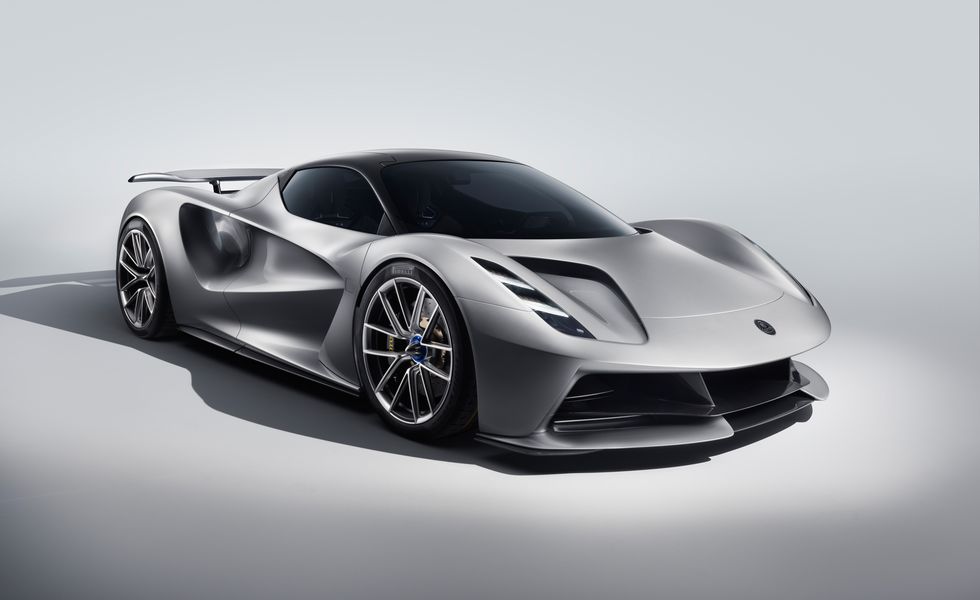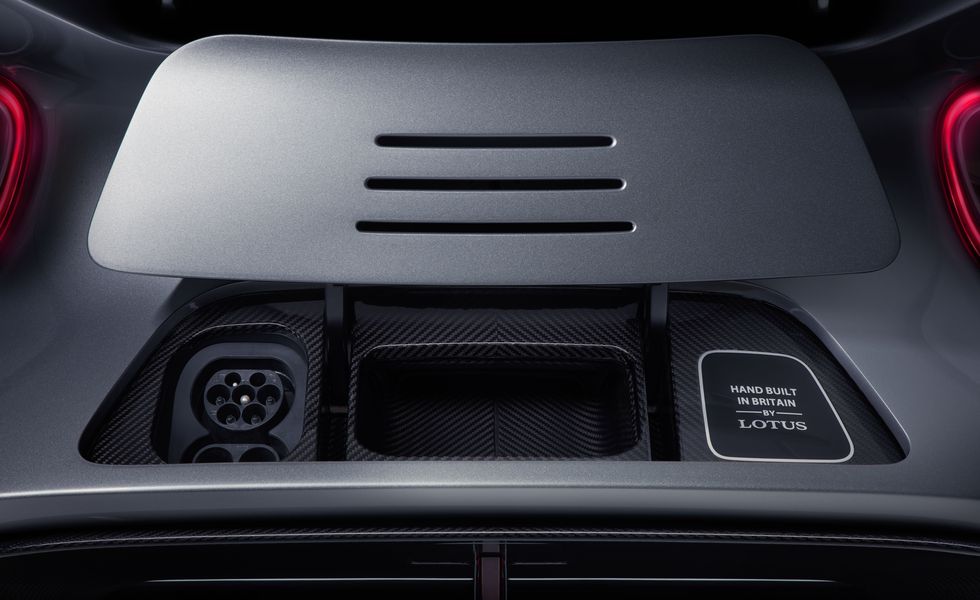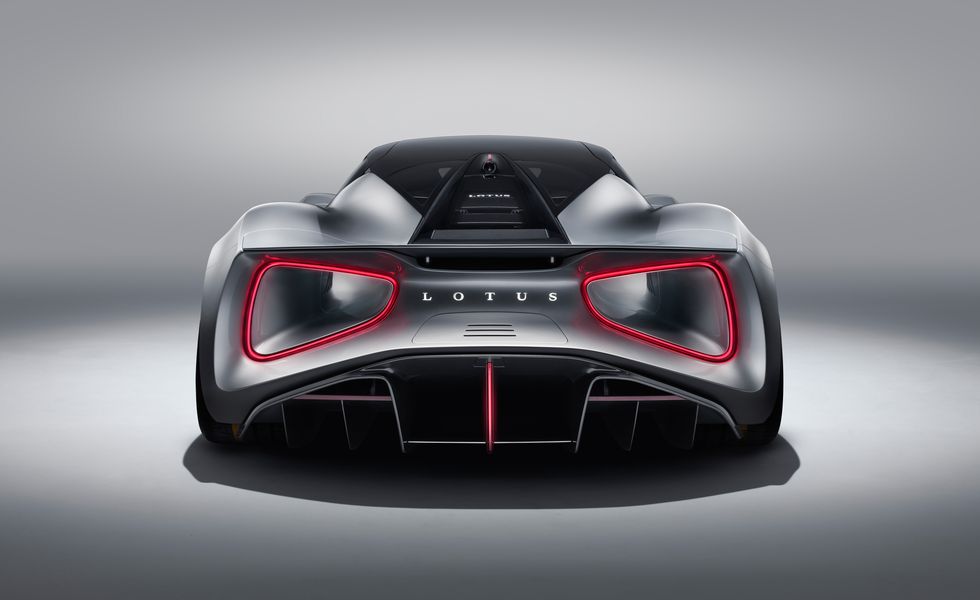The Lotus Evija is the Lotus battery-electric hypercar that hasn’t yet entered production but already appears to have broken a record. The Evija is supposed to be the quickest street-legal car from 0-186 MPH claimed by the company that the car can reach 186 MPH in less than 9 seconds.

Granted, it’s only at these high speeds that the Evija draws away from the competition. That’s because, in the 0-124 mph race, the sub-6.0-second time quoted by Lotus might not be sufficient to beat the Chiron Pur Sport (5.9 seconds), while the Ferrari reaches close (6.7 seconds). We must wait and see.
The Evija gains its prodigious acceleration from four electric motors, which provide a combined 1,973 horsepower and 1,254 pound-feet of torque. One motor controls each wheel, allowing all-wheel drive with torque vectoring.

A 70-kilowatt-hour battery pack provides the Evija an expected range of 250 miles on the European WLTP testing cycle. To counteract the pack’s weight, the Evija makes a carbon fiber monocoque chassis. The final result is a curb weight of 3,704 pounds.
Notwithstanding the ongoing coronavirus pandemic, Lotus assumes to begin dispatching the first of the 130 production cars before the end of the year.
Lotus has additionally said the Evija will do 0-62 mph in under 3.0 seconds and hit a top speed over 200 mph. Those figures are not even close record-breaking in an era where a Bugatti can top 300 mph, and a Tesla Model S is able to do 0-60 mph in 2.3 seconds.

This Lotus comes in a single trim that gives enough equipment to meet the needs of discerning hypercar buyers. Staggered magnesium wheels, sized 20 inches in front and 21 inches in back, hold this coupe in touch with the road. Laser lights lighten the path ahead. Lotus alleges that the Evija is the first production car to employ laser lights for both main and dipped beams.
The car’s sculpted carbon-fiber body moves close to the ground, with a ride height of just 4.1 inches. Pulling inspiration from Le Mans race cars, Lotus pierced each rear-quarter panel by a Venturi tunnel, which optimizes airflow by carrying it through the body shell. The car’s Venturi tunnels are piped with red LED lights. At night, this pattern creates a look that’s bold and dramatic, similar to the glow of afterburners on a fighter jet.
The rear spoiler uses active aerodynamics, rising from its resting state to lie even with the upper bodywork. To additionally reduce drag, the Evija doesn’t have outer mirrors. Instead, this model comes with front wing cameras that automatically deploy when the doors are opened. These cameras deliver images to three screens found inside the cabin. The car’s inventory of standard interior amenities includes climate control and a premium infotainment system. Lotus offers plenty of paint finishes and interior trims, permitting you to customize the Evija to your liking.







